Outside the ruins of the Tanagura Castle in Fukushima, there stands a venerable six hundred year-old tree: a keyaki (zelkova serrata). It has a height of 32 meters and almost ten meters in girth. It serves as a living symbol of Tanagura-machi. Keyaki is also the prefectural tree of Fukushima.
In November last year, I joined a bus tour to Tanagura-machi. Among the highlights of the two-day tour was rice-harvesting, talking to local farmers, onigiri-making, participating in a local festival, and shopping for local products. In our itinerary, there was no mention of visiting the Tanagura-Joseki (棚倉城跡) or Kamegajyo Park(亀ケ城公園)where the Tanagura oh-keyaki – the great zelkova serrata of Tanagura has been living for centuries. The encounter with this great creature was pure chance. I didn’t know about its existence and I wasn’t prepared for the meeting.
In the evening, after I got off the bus to join the town festival, I spotted the tree in the distance. I made a mental note about its location and promised to visit it. So the next day, instead of walking with the group in the town parade, I decided to explore the ruins of the castle and had a quiet conversation with the grand oh-keyaki.
While I was taking pictures, an elderly gentleman approached me. He asked where I had come from. I told him I live in Yokohama but I’m originally from the Philippines. He thanked me for visiting his hometown and he shared a story.
About four hundred years ago, he said, this keyaki tree was growing at the castle ground. There used to be a shrine there before the castle was built. The tree was planted not far from the shrine. In 1622, Hidetada Tokugawa, the second shogun of the Tokugawa Dynasty, ordered Nagashige Niwa, a daimyo (military general/feudal lord) to construct the castle. Tanagura Castle was completed in 1624. However, before the construction started, the shrine had to be moved somewhere and the young keyaki had to be uprooted and transplanted. Thus, the young keyaki was replanted outside the castle compound.
That’s an interesting story, I told the kind gentleman. This zelkova serrata has outlived human ambitions, desire, and greed. The castle had been long gone (it was burned down in 1868 by the Meiji Government as part of its campaign to eliminate remnants of the shogunate and of feudalism), but the great keyaki continues to grow and watch over the town. It has outlasted everyone.
Interestingly, among the twelve castles in Japan that have survived and have been restored, one of them – the Hikone Castle in Shiga Prefecture (construction of the complex begun in 1604), its lord’s palace – the Keyaki Goten (Zelkova Palace), was built entirely of keyaki wood, hence, the name.
If I had the means, I would purchase a keyaki tansu (zelkova chest) or a nagado daiko drum. But these are luxuries. I should content myself with little bits of happiness. Thus, in December, when the leaves ripen into yellow, orange, and red, I’d like to pay a visit to this sacred tree again.

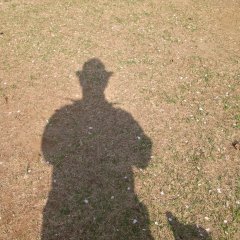
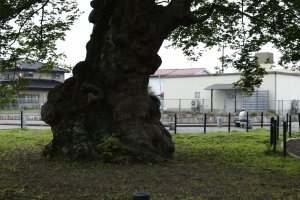
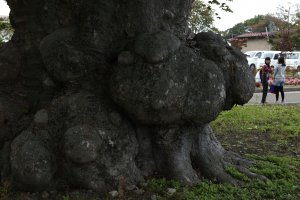
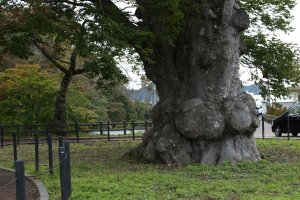

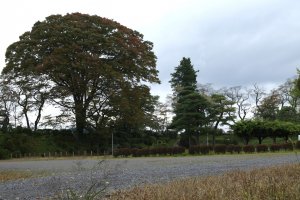
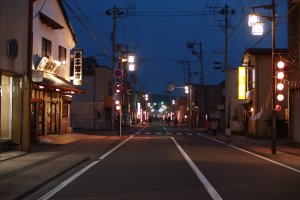
























Each time I’m near a great tree, I always feel the insignificance of man.